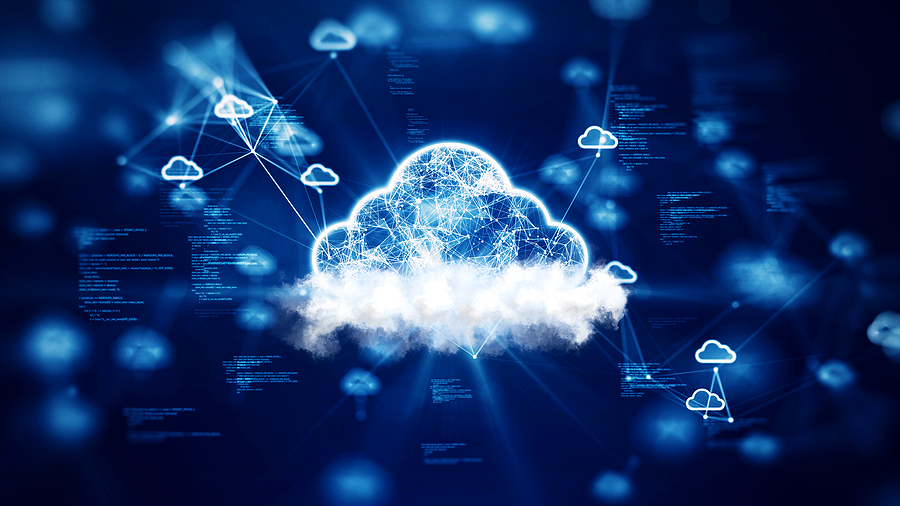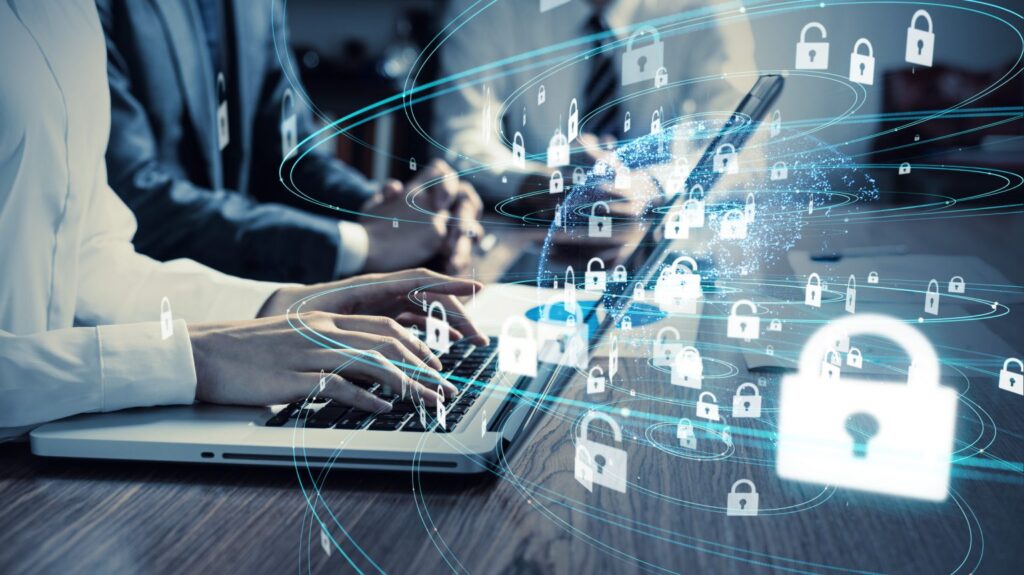Cybersecurity is an essential part of business operations. It ensures the protection of sensitive data and that cybercriminals cannot impact organizations negatively in any way.
San Francisco, being a tech hub, is a prime example of a business area that needs to stay vigilant when it comes to cybersecurity.
With this fact in mind, today’s article features a comprehensive list of 20 valuable cybersecurity tips that can be applied to various San Francisco Bay Area businesses.
Let’s begin with one of the most important features that businesses need to foster among all staff members.

1. Implement Strong Password Policies
Business owners who are serious about protecting sensitive information need to encourage employees to use complex passwords and enforce regular password changes. Multi-factor authentication should be used whenever possible, as this provides an extra layer of data protection.
Organizations should, furthermore, implement strong password policies to ensure that weak passwords are not used. Employees should also be made aware of the risks associated with using the same password across multiple accounts and websites, as this can make it easy for hackers to get access to not just one application, but several..
2. Keep Software Up to Date
It is vital that regular updates of operating systems, software, and applications are done to ensure that security patches are applied promptly. Keeping software up to date allows users to be better protected against malicious attacks that take advantage of outdated and vulnerable software.
Security patches that are issued by software companies often fix vulnerabilities that hackers can use to gain access to computers or networks. This makes it vital for business owners to prioritize updates – and make staff aware of when these updates take place.
3. Train Employees in Cybersecurity Awareness
Training is essential when it comes to maintaining effective cybersecurity. Ensure that you educate your staff about common cyber threats and best practices to identify and avoid phishing attempts, suspicious emails, and social engineering attacks. Provide them with examples of what to look out for and regularly test their knowledge with simulated phishing attempts. Check that your team knows the potential consequences of falling victim to cyber threats, including data breaches, financial losses, and reputational damage.
4. Regularly Backup Data
Create and maintain backups of critical business data, ensuring they are stored securely and tested periodically for restoration. Backing up data regularly allows a business to quickly recover in the event of a data loss or cyberattack. Testing backups periodically will keep all information up to date and provide a valuable safeguard if any data should be breached.
5. Encrypt Sensitive Data
Utilize encryption tools to protect sensitive data, both in transit and when stored. Encryption scrambles data so that it can’t be accessed without the encryption key. This ensures that if the data is stolen or intercepted by a malicious party, they won’t be able to decipher it and access sensitive information.
6. Secure Wi-Fi Networks
Ensure that Wi-Fi networks are properly secured with strong passwords and encryption protocols to prevent unauthorized access. Your IT teams should regularly monitor your business networks for suspicious activity and immediately address any breaches. Educate staff on cyber security best practices.

7. Use Firewall and Antivirus Software
Businesses must install and regularly update firewall and antivirus software on all devices to protect their systems against malware and other malicious activities. Invest in a reliable antivirus program that can detect and block malicious activities. Set the software to scan devices on a regular basis. Also, ensure that your firewall is configured correctly to protect against malicious network activity.
8. Implement a Virtual Private Network (VPN)
Use a VPN to secure connections when accessing company resources remotely, especially when using public Wi-Fi networks. This will help protect sensitive data from malicious attacks and ensure secure communication.
9. Restrict Access to Data
Implement access controls and limit user privileges so that only authorized individuals have access to sensitive data. This is essential for maintaining the security of the data and protecting it from unauthorized access, which could lead to a data breach or other malicious activity. Access controls also allow organizations to ensure that all users are held accountable for their actions when it comes to information security.
10. Regularly Monitor Network Activity
Monitor network traffic and set up intrusion detection systems to detect and respond to any suspicious activity promptly. For instance, regularly review logs for any signs of malicious activity, such as attempts to access unauthorized resources or changes to system configurations. Implement and enforce strong passwords and two-factor authentication. Ensure that all devices and systems are up-to-date with the latest security patches.
11. Implement a Data Loss Prevention (DLP) Strategy
Implement DLP solutions to prevent the unauthorized transmission of sensitive data outside the organization. Additionally, monitor all outbound data traffic and classify confidential information, and implement policies to restrict access to sensitive data and monitor any violations.
Make it a priority to regularly audit access permissions and review access rights of personnel. Establish a process for reporting data breaches and responding to incidents. Ensure that only authorized personnel have access to sensitive data.
12. Implement Mobile Device Management (MDM)
Use MDM solutions to manage and secure mobile devices used by employees, including remote wipe capabilities. MDM solutions allow administrators to remotely configure and manage mobile devices, such as iPhones and iPads, across an organization. This keeps all mobile devices configured securely and in compliance with company security policies. It also allows devices to be wiped in the event of a data breach or device loss.
13. Conduct Regular Security Audits
Regularly review your organization’s online security with comprehensive security audits that will identify vulnerabilities and address them promptly. A sound security audit should include regular monitoring of network activity, penetration tests, and vulnerability scans to identify areas of weakness in your security system.
14. Secure Physical Assets
Protect physical assets such as servers, routers, and other network equipment by restricting access and ensuring they are kept in secure locations. Regularly check for any signs of tampering or damage that could indicate intrusion from outside parties. In addition, ase encryption and authentication technologies to secure the physical assets. Maintain a log of any changes or maintenance to the physical assets.
15. Use Secure Cloud Services
When using cloud services, choose reputable providers that have robust security measures in place, including encryption and data backups. Read the provider’s security protocols and ensure that your data is protected. Ask about the availability of two-factor authentication for added security. Regularly check for any updates to the providers’ security policies.

16. Regularly Review and Update Security Policies
Keep security policies up to date with changes in technology as well as potential threats that could arise. Keep employees informed of their responsibilities. Security policies should be reviewed regularly to ensure that they are being followed, and any changes in technology or threats should be addressed immediately.
17. Implement Incident Response Plans
Develop and regularly test incident response plans to maintain a swift and effective response to security incidents. The incident response plan must include detailed instructions for responding to different types of security incidents, as well as procedures for reporting and escalating incidents to the appropriate personnel.
18. Conduct Background Checks
Perform thorough background checks on employees, particularly those in positions that require access to sensitive data. Check criminal records, references, and former employers to verify the employee’s identity and credibility. Keep all background checks up to date and properly documented. Follow local laws and regulations when carrying out background checks.
19. Secure Internet of Things (IoT) Devices
All IoT devices need to be properly configured, regularly updated, and isolated from critical systems to prevent unauthorized access. Regularly review and audit IoT device logs to detect malicious activities. Also, use strong passwords and two-factor authentication for device access, and implement a secure network segmentation strategy for IoT devices.
20. Work with IT Security Professionals
No cybersecurity tips list would be complete without mentioning the importance of working with IT security experts. Consider partnering with experienced managed IT security professionals who can provide guidance, conduct assessments, and help develop a robust cybersecurity strategy tailored to your business needs.
Managed IT security services can provide real-time monitoring and response to cybersecurity events, alerting your team of potential risks and allowing for quick mitigation.
They can assist with patching processes, antivirus management, secure configuration, and more. Managed IT security services can help your team stay one step ahead of cyber threats, protecting your system and data from malicious attacks.
Final thoughts
Cybersecurity is an ongoing effort that requires constant vigilance. By following these 20 cybersecurity tips, San Francisco businesses can significantly enhance their security posture and protect themselves from potential cyber threats. Prioritizing cybersecurity not only safeguards sensitive information but also helps maintain the trust and confidence of clients and customers.
If you would like to learn more about protecting your business, schedule your free consultation with 911 PC Help today, or give us a call at 415-800-1130!

